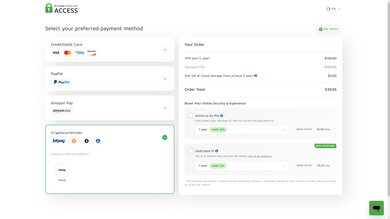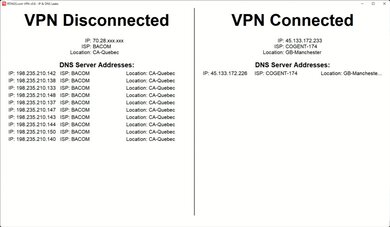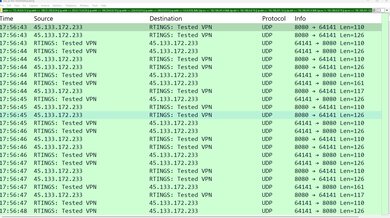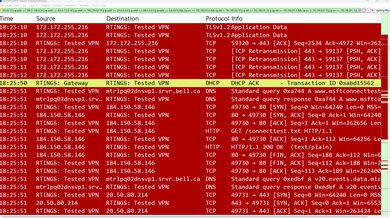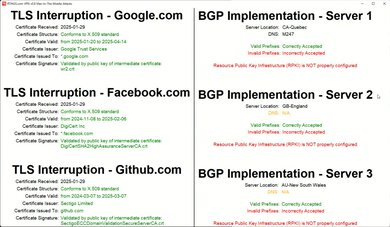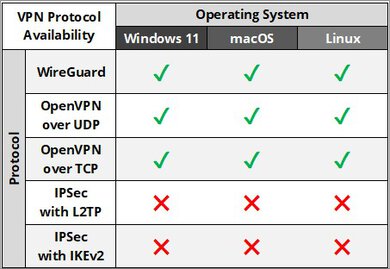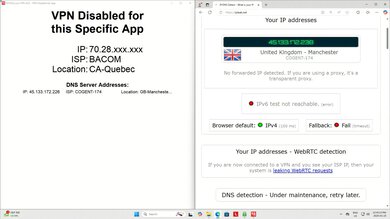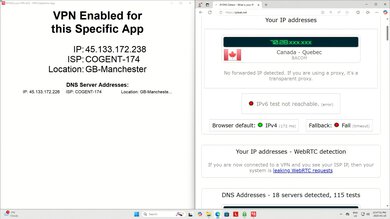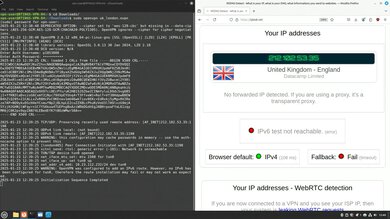Private Internet Access is a VPN provider established in 2010 and headquartered in the United States. It's owned by Kape Technologies, the parent company of ExpressVPN and CyberGhost, two other large VPN providers. Private Internet Access features open-source applications on a variety of platforms, servers in 90+ countries, obfuscation, multi-hop, and unlimited simultaneous connections.
Our Verdict
Private Internet Access is good for torrenting. It has acceptable security that keeps your IP address and DNS queries within its tunnel while using it, and it allows you to download torrents without a data limit. That said, its kill switch doesn't work properly upon rebooting your system, as some unencrypted traffic leaks past the VPN. While you can pay with cryptocurrencies for better anonymity, you need to register with an email address and password that can be linked to your identity in the event of a data breach.
Accepts cryptocurrency.
Proper TLS implementation doesn't leave you vulnerable to man-in-the-middle attacks.
Doesn't leak your IP address or DNS queries.
Kill switch leaks unencrypted traffic after system reboot.
No anonymous registration options.
Private Internet Access has acceptable security. It doesn't leak your IP address or DNS queries while you're connected, and it has proper TLS implementation, protecting you from man-in-the-middle attacks. Unfortunately, its kill switch doesn't work as intended, as it leaks some unencrypted traffic upon restarting your system. This is a concern if you need all your traffic to be encrypted after a reboot.
Proper TLS implementation doesn't leave you vulnerable to man-in-the-middle attacks.
Doesn't leak your IP address or DNS queries.
Kill switch leaks unencrypted traffic after system reboot.
Private Internet Access has poor download and upload speeds, so downloading or uploading large files takes time. However, its latency is acceptable, and delivers a usable experience for everyday browsing overall.
Changelog
-
Updated Aug 11, 2025:
We've retested this VPN's Kill Switch Robustness after updating to the latest version of the software, and found that it no longer leaks after the software crashes. Unfortunately, it still leaks after a system reboot.
- Updated May 14, 2025: We've converted this review to Test Bench 0.9.1. This redefines what we consider to be a leak.
- Updated Mar 31, 2025: Review published.
Check Price
Differences Between Sizes And Variants
While PIA doesn't have different tiers, they offer Antivirus and dedicated IP add-ons.
Popular VPN Comparisons
Private Internet Access has acceptable performance that's on par with most VPN services, but like most, it fails the kill switch test. It's good enough if you're just downloading torrents and browsing the web while protected, but its speeds are mediocre, so don't expect blazing-fast downloads.
It's also owned by Kape Technologies, which privacy-minded users tend to criticize due to controversies about ad injection from its past. If that's a concern for you, consider other VPNs we've tested, but know that even VPN providers with a squeaky-clean record aren't infallible. Check out our article about VPN privacy for more details.
To see which services we recommend, check out our article on the best VPNs.
Test Results

The kill switch doesn't work properly, as network traffic leaks outside the VPN tunnel after a reboot. This is problematic if you're concerned with keeping your traffic encrypted when reconnecting to the internet after restarting your system.
Private Internet Access has middling download speeds that are consistently slow. While downloading large files might take a while, the speeds are fine for normal internet use.
This VPN delivers consistently slow upload speeds. Uploading large files won't be the fastest, but it's okay for regular, non-intensive internet use.
This VPN delivers decent latency performance on average. It's mostly consistent despite a few occasional latency spikes that could disrupt latency-sensitive applications like video calls or online games.
This VPN's native Linux app supports Ubuntu, Mint, Debian, Fedora, and Arch. You can also configure it manually using the command line.
It's also available on various platforms, including iOS, Android, smart TVs, and as Chrome and Firefox extensions.

